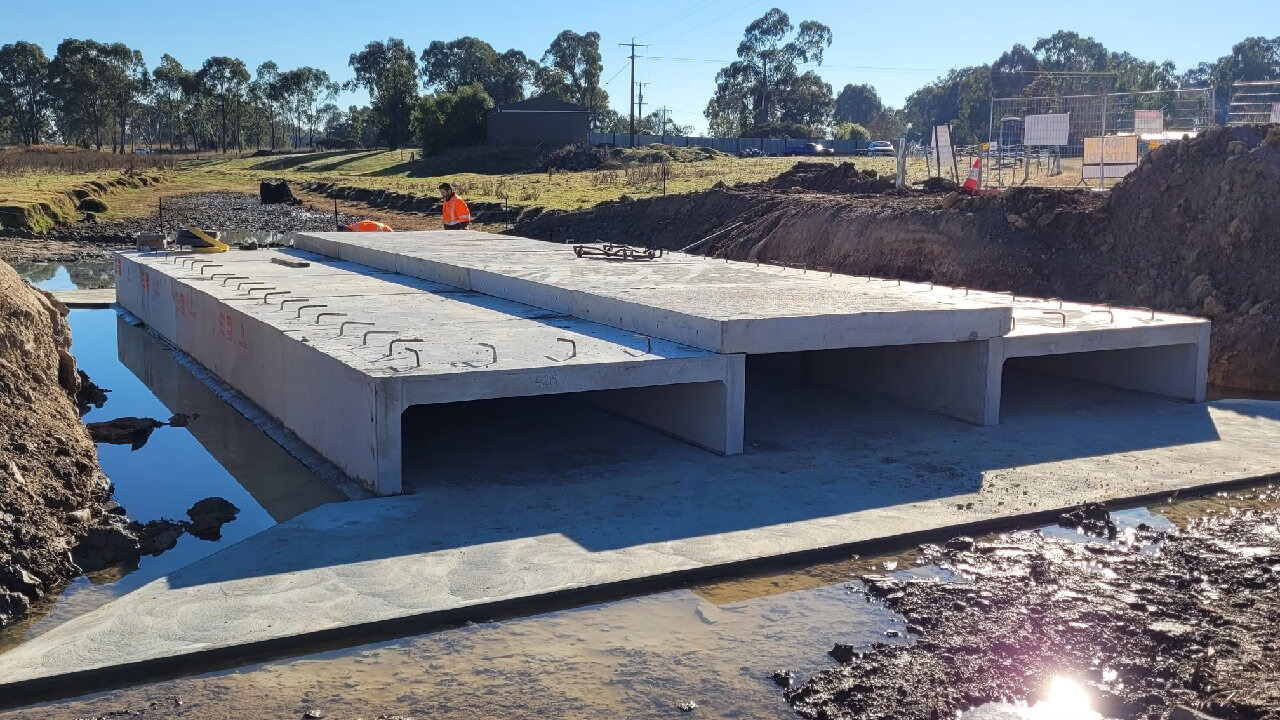Culvert Installation Made Easy: Step-by-Step Overview for Success
Installing culverts might appear like a simple job, yet making certain an effective end result needs cautious planning and execution. From picking the proper culvert size to integrating correct drain procedures, each action in the installment procedure plays a crucial role in the functionality and longevity of the culvert system. By complying with a methodical method and focusing on essential information, the installation can continue smoothly, reducing potential issues down the line. Remain tuned to uncover the essential actions and considerations that can make culvert setup a seamless and effective endeavor.
Selecting the Right Culvert Size
Picking the suitable culvert dimension is important for ensuring efficient water flow and architectural integrity in culvert setup tasks - Pad Construction. The size of the culvert straight affects the circulation capacity of water with the framework. A culvert that is too small can cause flooding and overflow, while one that is too big might cause lowered water rate, potentially triggering debris build-up and blockages
To figure out the best culvert dimension, factors such as the watershed area, peak circulation rates, and hydraulic effectiveness demand to be carefully thought about. Estimations based on these parameters assist in choosing a dimension that can properly manage the predicted water quantity while lessening the threat of blockages and structural failing.
It is vital to consult engineering guidelines and requirements to make certain that the selected culvert size fulfills the task needs and neighborhood policies (Pad Construction). By selecting the appropriate culvert dimension, task supervisors can maximize water flow, avoid prospective issues, and enhance the general performance and durability of the culvert installation
Preparing the Installment Website
Reliable culvert installment requires careful prep work of the setup website to ensure optimal architectural support and capability. Before commencing the installation procedure, it is critical to get rid of the site of any kind of debris, greenery, or obstructions that can restrain the culvert's placement. Making sure a level foundation is essential for the correct placement and security of the culvert. This may entail grading the site to produce a smooth, even surface area that can effectively sustain the weight of the culvert and any kind of awaited loads. Furthermore, proper compaction of the dirt below the culvert is necessary to avoid settling or moving gradually.
Additionally, it is essential to think about aspects such as dirt composition, groundwater degrees, and environmental effects when preparing the installment website. Conducting an extensive website assessment can aid recognize any prospective difficulties or risks that may influence the culvert's efficiency. By taking the time to prepare the installation site correctly, you can assist assure an effective culvert setup that satisfies architectural demands and makes sure long-term performance.
Putting the Culvert Properly

The grade at which the culvert is placed is critical for maintaining a proper slope for water link flow. In addition, the culvert needs to be oriented correctly to guarantee that the inlet and outlet are in the proper locations. Pad Construction.
Backfilling and Compacting the Soil
Appropriate backfilling and compaction of the dirt around the culvert is vital to make sure stability and avoid prospective problems in the future. When the culvert is properly put, the next crucial action is to backfill the location around it with ideal product. The backfill product should be devoid of rocks, debris, and raw material to prevent damage to the culvert. It is recommended to use granular material such as sand or crushed rock for backfilling, as it provides good drainage and compaction residential or commercial properties.
Compaction aids in lowering the possibilities of settlement and my company makes certain uniform support around the culvert. It is essential to portable the dirt uniformly on all sides of the culvert to preserve its architectural honesty.
Appropriate backfilling and compaction not only offer security to the culvert yet additionally help in avoiding soil disintegration and keeping the long life of the culvert system.
Guaranteeing Proper Drain Integration
Incorporating efficient water drainage services plays an important duty in the overall functionality and long life of culvert installments. Proper drain integration is necessary for managing water flow, protecting against disintegration, and making certain the structural stability of the culvert system. To attain this, it is vital to create a detailed drain strategy that thinks about variables such as the volume of water expected, the topography of the location, and the kind of dirt existing.

Furthermore, integrating functions like erosion control procedures, such as riprap or plants, can further improve the effectiveness of the water drainage system. By meticulously intending and carrying out these water drainage solutions, culvert setups can work efficiently and withstand the examination of time.
Final Thought
In final thought, proper culvert installment is critical for preserving efficient water drainage systems. By picking the right culvert size, preparing the installment site, positioning the culvert correctly, backfilling and condensing the soil, and guaranteeing appropriate drain assimilation, success can be accomplished. Adhering to these steps will certainly assist make sure the long life and performance of the culvert, inevitably adding to the total success of the water drainage system.
Comments on “Trusted Pad Construction for Your Task Demands”